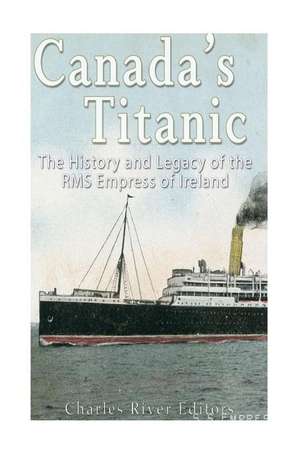Canada's Titanic
Autor Charles River Editorsen Limba Engleză Paperback
| Toate formatele și edițiile | Preț | Express |
|---|---|---|
| Paperback (2) | 64.21 lei 3-5 săpt. | |
| – | 64.21 lei 3-5 săpt. | |
| – | 73.28 lei 3-5 săpt. |
Preț: 64.21 lei
Nou
Puncte Express: 96
Preț estimativ în valută:
12.29€ • 12.83$ • 10.17£
12.29€ • 12.83$ • 10.17£
Carte disponibilă
Livrare economică 15-29 martie
Preluare comenzi: 021 569.72.76
Specificații
ISBN-13: 9781540722836
ISBN-10: 154072283X
Pagini: 46
Dimensiuni: 152 x 229 x 3 mm
Greutate: 0.08 kg
ISBN-10: 154072283X
Pagini: 46
Dimensiuni: 152 x 229 x 3 mm
Greutate: 0.08 kg
















